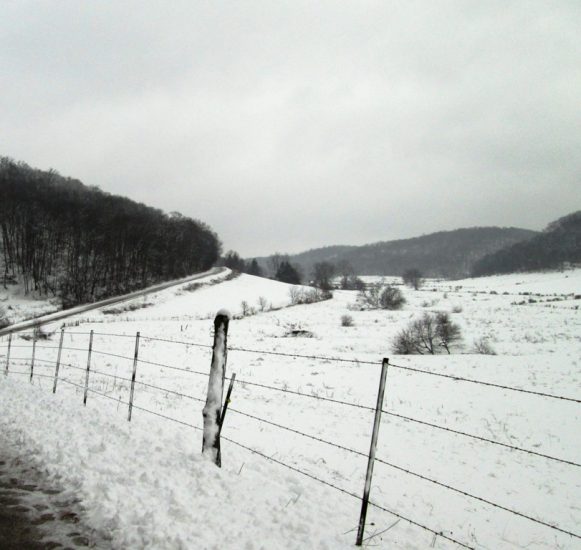Did Wright ever live in Wisconsin in the winter?

The simple answer is yes.
But today anyone walking into his living quarters at Taliesin sees flagstone floors and floor-to-ceiling French doors with single-pane glass (as you see in this interior photo at the Wisconsin Historical Society). So, it’s a natural thing to wonder, if you know Wisconsin at all (or have heard of the IceBowl), how the hell someone could have lived in this house in a Wisconsin winter.
In 1911, when Frank Lloyd Wright first designed Taliesin, he did intend it to be a year-round home. And he knew the state gets cold in the winter, so it was more airtight at that time (as you see here) and had radiators as well as fireplaces. His Wisconsin home worked with Wisconsin winter weather up until the 1930s. After that, Wright left for Arizona practically every fall/winter. He was going there with his family and apprentices in the Taliesin Fellowship to live and work. After a few years of searching for a site, he found land in Scottsdale in 1937, signed the papers on it the following February, and began building his winter home (Taliesin West).
Wright started Taliesin West, including, very importantly to the architect, a drafting studio, so he could work in the winter. After he began Taliesin West, Wright, his family, and the Taliesin Fellowship, moved between Wisconsin and Arizona each year. They would leave Wisconsin in the fall, and arrive back the next spring. Leaving and coming back allowed Wright to see his homes “fresh” eyes and ideas. So the two Taliesins (Wisconsin and Arizona) changed constantly under his direction.
Taliesin reflected Wright’s winters in Arizona
By 1959 (the year that Wright died), Taliesin in Wisconsin reflected his time in Arizona. By the end of his life, Wright hadn’t worried about Wisconsin winters for over 20 years. He returned every spring, moved out or eliminated walls, and added more glass and stone.
Of course, when I write that “he” did this or that at the buildings, the physical work was really done by his apprentices—young men and women—in the Taliesin Fellowship.
Click on the links below for photos from the Wisconsin Historical Society that show the inside of the house in these later years during the summer. You’ll see all of the stone and glass:
https://www.wisconsinhistory.org/Records/Image/IM64955
https://www.wisconsinhistory.org/Records/Image/IM64906
The man writing about winter weather
Of course, all of this didn’t stop the man from having, sometimes, overly romantic views of the winter. Among what he wrote in his 1932 autobiography about his home in the winter is that Taliesin
“was a frosted palace roofed and walled with snow, hung with iridescent fringes, the plate-glass of the windows delicately fantastic with frosted arabesques.”
Frank Lloyd Wright Collected Writings: 1930-32, volume 2. Edited by Bruce Brooks Pfeiffer, introduction by Kenneth Frampton (Rizzoli International Publications, Inc., New York City, 1992), 228.
Took me awhile to realize that when he lovingly described “frosted arabesques”, he meant frost. When he was writing in 1932, Taliesin was still where he would live in the winter, and he described frost growing on the inside of the windows in his house. I’ve lived with frost inside the windows in Wisconsin. It’s, um… unpleasant, to say the least.
First published 9/8/2020.
I took the photograph at the top of this post in 2016.
Here’s a link to a post I did about a book by a member of the Taliesin Fellowship.
